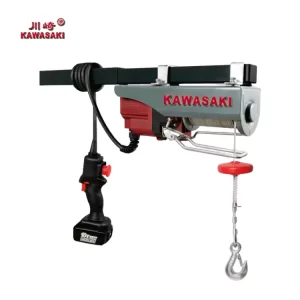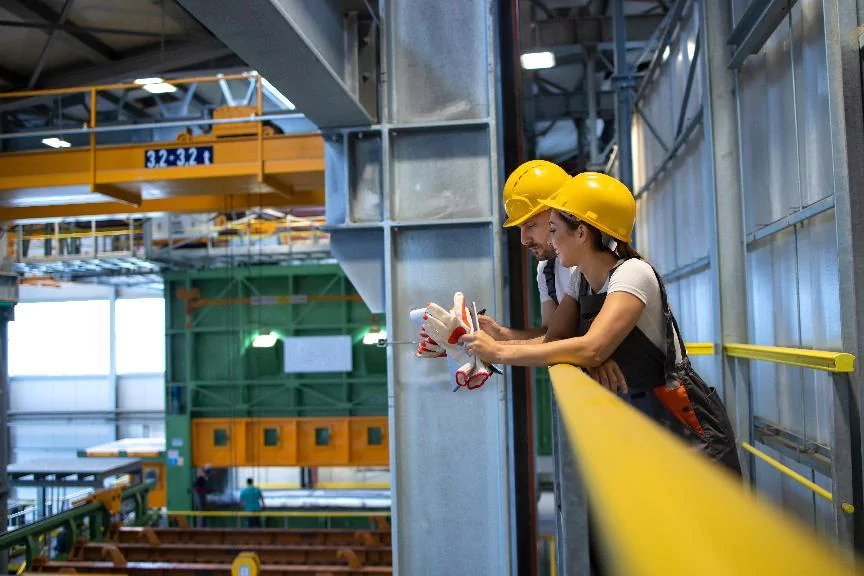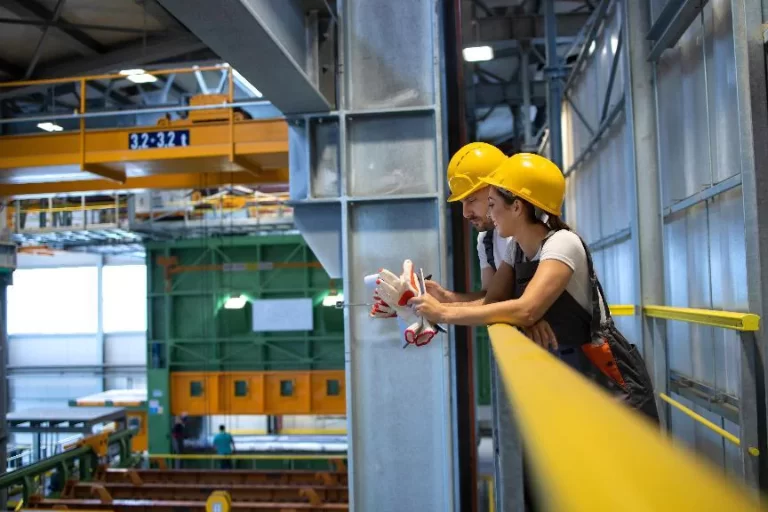Chain hoists are one of the most widely used machines for lifting heavy loads in different industries. They come in different types. To help you choose between a chain hoist or a chain block, some factors to consider include load capacity, lifting height, use environment, and frequency of use.
Knowing Something about Chain Hoists
Chain hoists are popular in most industries mainly because of their method of raising substantial loads. Material handling equipment and tools material handling devices are crucial to the process and are available in multiple shapes and functionalities based on purpose. These devices are important to carry out a material handling process with efficiency and available in different types and operations and create a purpose-driven material handling process.
Types of Chain Hoists
There are different types of chain hoists, and it all starts with the chain hoists’ power source, such as manual chain hoists, electric chain hoists and pneumatic chain hoists. Hand chain hoists depend on human power to lift loads and are perfect for smaller applications or in places where electrical supply is not available. On the other hand, electric chain hoists are used for heavier, more accurate and more efficient lifting. Their motor-driven nature creates an advantage in high-demand conditions as they enable quicker operations and greater lifting heights. Finally, pneumatic chain hoists use compressed air to operate and are designed for use in explosive or flammable environments where a safe operation is paramount.
Applications of Chain Hoists in Industry
Chain hoists are employed in a range of locations and industries. They are essential to manufacturing, construction, warehousing and logistics. In manufacturing facilities, for instance, chain hoists allow for assembly by placing heavy pieces in position. On construction sites, they help to lift building materials to high-up working areas. Chain hoists are most common in warehouses for the proper loading and unloading of goods.
Exploring Chain Blocks
Chain blocks are manual equipment that has been a tried-and-tested method for manually lifting heavy loads for centuries.
Definition and Functionality
A chain block is a device that relies on pulleys located directly in the casing with a chain looped about it. The operator pulls one end of the chain and rotates the pulleys inside the casing which causes the load hook of the hoist to rise or decline as necessary. It gives considerable mechanical advantage thinking it allows one to lift heavy loads by merely making use of the little lifting pressure.
Types of Chain Blocks
Chain blocks are usually categorized concerning load capacity and design parameters. From economic simple lifting ability for light loads to more complex variations that may include other safety functions like overload protection devices or swing hooks for easy mobility. Entry-level models provide simple lifting action for light loads, while higher-spec versions also have extra safety features like overload protective devices or swivels that make maneuvering easier.
Common Uses of Chain Blocks
Chain blocks are very simple but work effectively, so they are used in various sectors like automotive component removal or engine fitment at automotive repair workshops, in mining operations where they help load or unload heavy machinery, and also in a stage where devices slip the hanging downstage props of theatre on time but secretly.
Technical Differences Between Chain Hoists and Chain Blocks
While both devices serve similar purposes—lifting heavy objects—their technical differences dictate their suitability for specific tasks.

Mechanical Design Variations
The mechanical design is the key distinction. A chain hoist typically comes equipped with a motorized mechanism making it faster and more efficient during operations than a manual-driven chain block that relies purely on human strength with its pulley systems that lack any motor assistance in action.
Operational Differences
From an operational standpoint, electric chain hoists allow more controlled and smooth traveling of loads at very exact distances. This is made possible by the use of automation controls like frequency converters instead of mere gear systems which smoothen transitions between speeds whereas in manually operated chain blocks person behind wins the battle worst case till the end of the full lift cycle thus making them less efficient but reliable under certain conditions, especially when power sources are not readily available due safety concerns!
If you want a solution customized that match unique target operation conditions, then APOLLO offers a huge variety of products to meet every requirement including an explosion-proof design, and dustproof rainproof version ensuring great performance endlessly even under other environmental threats in daily life.
Safety Considerations for Both Devices
Ensuring safety when using lifting equipment such as chain hoists and chain blocks is very important. These devices include some safety features to safeguard the operator and the load.
Safety Features in Chain Hoists
Chain hoists have numerous built-in safety features which makes them more reliable. Most electric chain hoists come with built-in safety limit switches and overload protection devices. These features inhibit the hoist from exceeding its limit, saving both the equipment and the user damage. In addition, having the hoist work as electric means that there is more guided and accurate movement, which lowers the chances of accidents occurring during usage.
Safety Features in Chain Blocks
Even the chain blocks, which are very simple, have all the necessary safety features that you may need while using them. Most designs include overload protections that cause the drive to shut down when you exceed the design limits of force that can be applied so it does not break or hurt you. To reduce the potential imbalance of loads, many systems include swivel hooks which can add to navigation. As chain blocks are operated manually, it is necessary to pay attention to the techniques used for operating them to ensure safety.
Selecting the Right Equipment for Your Needs
Choosing between a chain hoist and a chain block depends on various factors, including your specific lifting requirements and operational environment.
Factors to Consider When Choosing a Device
Several considerations should guide your decision-making process:
- Load Capacity: Determine the weight of loads you need to lift regularly. Electric chain hoists offer greater lifting capacities compared to manual chain blocks.
- Lifting Height: Assess how high you need to lift materials. Electric hoists can achieve higher lifting heights than their manual counterparts.
- Operational Environment:Consider environmental conditions such as temperature, humidity, and potential exposure to explosive substances. Electric hoists can be customized for harsh environments with options like explosion-proof designs.
- Frequency of Use: Evaluate how often you will use the equipment. For frequent or continuous lifting tasks, electric hoists provide efficiency and ease of use.
- Budget Constraints: Balance your budget with your operational needs. While electric hoists may have higher upfront costs, they offer long-term savings through increased productivity.
Recommendations for APOLLO Products
APOLLO can provide you with the best equipment that suits your operational requirements by understanding your specific operational needs, taking into consideration load capacity, environmental demands, and other operational aspects. From heavy-duty electric chain hoists for industrial applications to manual chain blocks, APOLLO has a solution for you built with decades of experience in manufacturing low-maintenance industrial lifting machinery.
They place a great deal of trust in their quality assurance with rigorous testing procedures that guarantee that every product complies with strict national parameters before it departs from the factory. APOLLO manufactures equipment that has been certified for ISO9001 as well as CE/GS safety certification–coupled with first-class after-sales support service. Click here to know more about its brand KAWASAKI!


